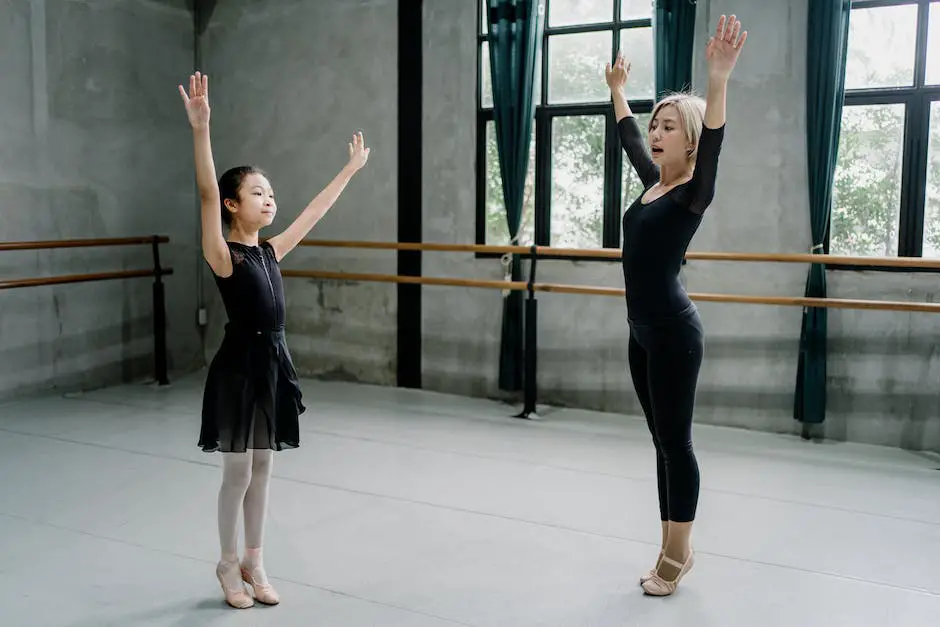From the humble beginning as a simple stone to cradle the heads of our ancient ancestors, to the plush frills of silk and down feathers we rest on today – the story of pillows is as rich as it is varied. For many, a pillow is much more than just a place to lay one’s head. They provide comfort, enhance our sleep, and in many cultures, they are even believed to hold charm and solace. In this exploration, we delve into the vast enigma that is the world of pillows. From its origins traced back to ancient civilizations to the truly impressive array of options available today; from an in-depth scientific explanation on how they improve sleep quality, to a comprehensive guide on choosing the perfect pillow for an individual’s needs. So, travel with us on this journey of discovery, as we aim to pillow-talk our way into understanding this most humble and essential possession.
History and Different Types of Pillows
Historical Progression of Pillows
The existence of pillows dates back to around 7,000 BC in early Mesopotamia, where the affluent used soft stones to rest their necks. These rudimentary pillows were less about comfort and more about deterring insects from crawling into hair, ears, mouth and nose. As time progressed, ancient Egyptians started using stone or marble pillows to support the heads of their deceased during the mummification process, believing it would aid in their journey to the afterlife.
Types of Pillows Available in Today’s Market
With industrial progress and a greater focus on comfort and health, a plethora of pillow types have emerged. Among them are memory foam pillows, known for their ability to conform to the shape of the head and neck, providing excellent support and pressure relief. For those seeking a luxurious sleep experience, down pillows filled with the soft feathers from the undercoat of ducks or geese, are an enduring favourite.
Micro-bead pillows, filled with tiny polystyrene beads, are not just for travel neck support but can also provide a good night’s sleep. For those battling allergies, hypoallergenic pillows are a boon. Using materials such as rayon derived from bamboo, these pillows deter the accumulation of dust mites and other allergens.
Materials Used in Pillow Production and Their Purposes
Each pillow type has a unique filling. The synthetic filling is used in polyester pillows, which are low-cost and easy to care for, making them a common choice for children or for guest rooms. Down and feather fillings are the epitome of luxury, offering superior softness and the ability to reshape the pillow easily. Memory foam and latex fillings provide firm support and contouring, ideal for those with neck or back problems.
Cotton and wool are natural, breathable options, accommodating to those living in hotter climates or those who sleep hot. Microbead and buckwheat fillings offer supportive and flexible options for those favouring firmer pillow types.
The Cultural and Industrial Aspects of Pillow Development
Culturally, the change in pillows reflects societal changes, from extravagant embroidered pillows in the Elizabethan era to simplistic, minimalist designs from the modernist period. Industrial aspects have also moulded pillow development, from hand-sewn to mass-manufactured. Sustainability and environmental consciousness have steered the market towards organic pillows and those with recyclable materials.
From a health perspective, rising instances of insomnia and back problems have inspired producers to innovate ergonomic designs and cooling technology. The advent of e-commerce has also sparked online-only pillow companies offering customisations based on customer preference for size, firmness, and material.
The Contemporary Perception of Pillows
In the modern era, pillows have evolved to be more than just a comfort device, they’ve become integral to our overall well-being. Their role in supporting correct spinal alignment helps prevent a variety of physiological problems, such as snoring and persistent neck pain. Furthermore, with the right choice of colour and texture, pillows can enhance the ambiance of a room, thereby adding a cultural influence to their functionality.
The Science Behind Pillows and Sleep
Comprehending the Influence of Pillows on Sleep Quality
When it comes to sleep quality, pillows serve a noteworthy purpose. Selecting the appropriate one necessitates an understanding of both the physical attributes and individual sleeping preferences. A pillow is more than a soft headrest; it offers essential neck support and ensures the spine remains properly aligned whilst sleeping.
Pillow Firmness and Sleep Position
Research suggests that ideal pillow firmness is largely dependent on a person’s sleeping position. For instance, those who sleep on their sides may benefit from a firmer pillow that fills the space between the head and neck adequately. On the other hand, stomach sleepers might do well with a soft, flat pillow, or even no pillow at all, to prevent unnatural neck bending. Back sleepers often require a medium firm pillow to provide adequate support for the neck and head without forcing it too far forward, thus respecting the natural curve of the spine.
Pillow Loft and Sleep Quality
Loft is another crucial factor when selecting a pillow. This term refers to a pillow’s height as it sits on the bed, unoccupied. The right loft depends on an individual’s body size, sleep position, and mattress firmness. Generally, a larger person or someone who sleeps on a soft mattress might need a higher loft to keep their head at the correct angle, while a petite person or someone on a firm mattress could require a lower loft.
Pillow Shape and Spinal Alignment
The shape of a pillow can also influence sleep health by promoting or hindering spinal alignment. Traditional rectangular pillows are the most common, but ergonomic pillows — often contoured for neck and shoulder comfort — can be beneficial, especially for those who suffer from chronic neck or back pain.
Pillow Material and Sleep Comfort
The material of the pillow can influence sleep comfort and health. Hypoallergenic materials are beneficial for those with allergies, and cooling properties can help with thermal regulation, which is pivotal for sound sleep. Advances in technology have led to the advent of memory foam pillows that can mould to the contours of your head and neck, providing personalised support and promoting muscle relaxation during sleep.
Pillow Science: Current Research
Current research in sleep science corroborates these tenets. A 2019 study published in the Scientific Reports journal found that participants using higher-loft pillows experienced reduced discomfort and enhanced sleep quality. Another study from the Journal of Pain Research highlighted that latex pillows can significantly reduce waking-time neck pain.
The Significance of Selecting a Suitable Pillow
Recent studies highlight that pillows are much more than just items of comfort; they are crucial instruments for optimising sleep. The process of choosing the right pillow entails multiple factors such as firmness, loft, shape, and the material it’s made from. These selections should also take into account an individual’s sleep patterns and physical attributes. Given the pivotal role of sleep in maintaining overall health and wellbeing, taking the time to carefully select the perfect pillow is definitely worthwhile.
Choosing the Right Pillow: A Buyer’s Guide
Getting to Know Your Pillow Options: Shape, Size, and Firmness
Pillows come in an array of shapes, sizes, and varying degrees of firmness. Standard pillow measurements are generally categorised into Small, Standard, Queen, and King sizes. Moreover, there are specially designed shapes like Bolster and Euro pillows, typically utilised for aesthetic purposes, or for providing extra support to the back. The shape of a pillow largely depends on personal preference, with popular options including square, oblong, and round.
Selecting Pillow Material
The material filling also plays a critical role in a pillow’s comfort and support. For example, memory foam pillows, known for their contouring abilities, can be an excellent option for people who often experience neck or back pain. Down pillows, filled with feathers from ducks or geese, are renowned for their durability and plush comfort but may be unsuitable for those with allergies. Alternatively, synthetic fills or down-alternative pillows can offer similar softness to down pillows but with hypoallergenic properties.
Latex pillows, both natural and synthetic versions, provide firm support and maintain their shape particularly well. Some people may prefer buckwheat pillows, which conform well to the shape of the head and neck but have a different feel to foam or feather options.
Influence of sleeping positions and health conditions on pillow selection
An important factor to take into account while selecting a pillow is your sleeping position. Side sleepers often benefit from a firmer, thicker pillow to support the neck, while back sleepers might prefer a medium-firm option for adequate support without excessive height. For stomach sleepers, a soft and thinner pillow is usually the best choice.
Health issues can also direct your pillow choices. For instance, sleep apnoea sufferers might benefit from specially designed pillows that elevate the upper body or ensure side-sleeping, reducing symptoms. Neck pain sufferers might prefer memory foam or cervical pillows for their contouring and supportive properties, while hypoallergenic pillows are great for allergy sufferers.
In conclusion
Choosing the perfect pillow involves considering personal preferences, sleeping position, and any health conditions. Coupled with the knowledge of different pillow sizes, shapes, firmness levels, and materials, this understanding will guide you towards a pillow choice that ensures comfort, good sleep hygiene and overall well-being.
This journey through the evolution of pillows and their impact on our sleep health has led us to a deeper appreciation of how form and function merge seamlessly within these seemingly insignificant objects. We’ve traversed the timeline of pillow history, delved into their varied types and materials, and examined the science behind their influence on our sleep. We’ve also provided indispensable guidance on how to select the ideal pillow to cater to your unique needs. Armed now with this knowledge, one can begin to view pillows from a fresh perspective – as more than just an accessory for our beds, but a tool for enhancing our sleep quality, making each night a better experience for the day that lies ahead. Whether you’re a side sleeper, a back rester or a stomach soother, may your newfound knowledge guide you in your quest of finding your perfect pillow, transforming not just your nights, but also your days.




